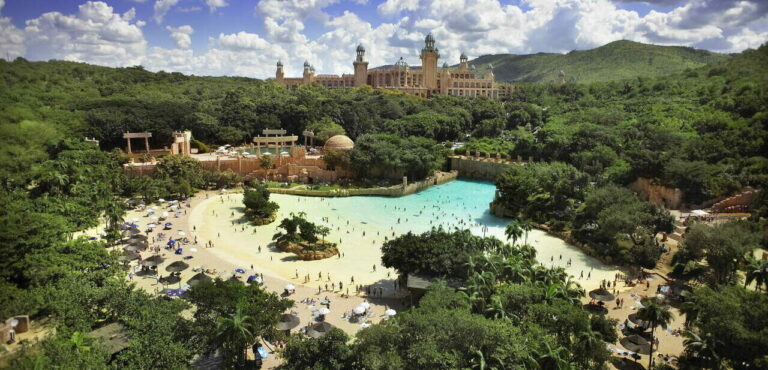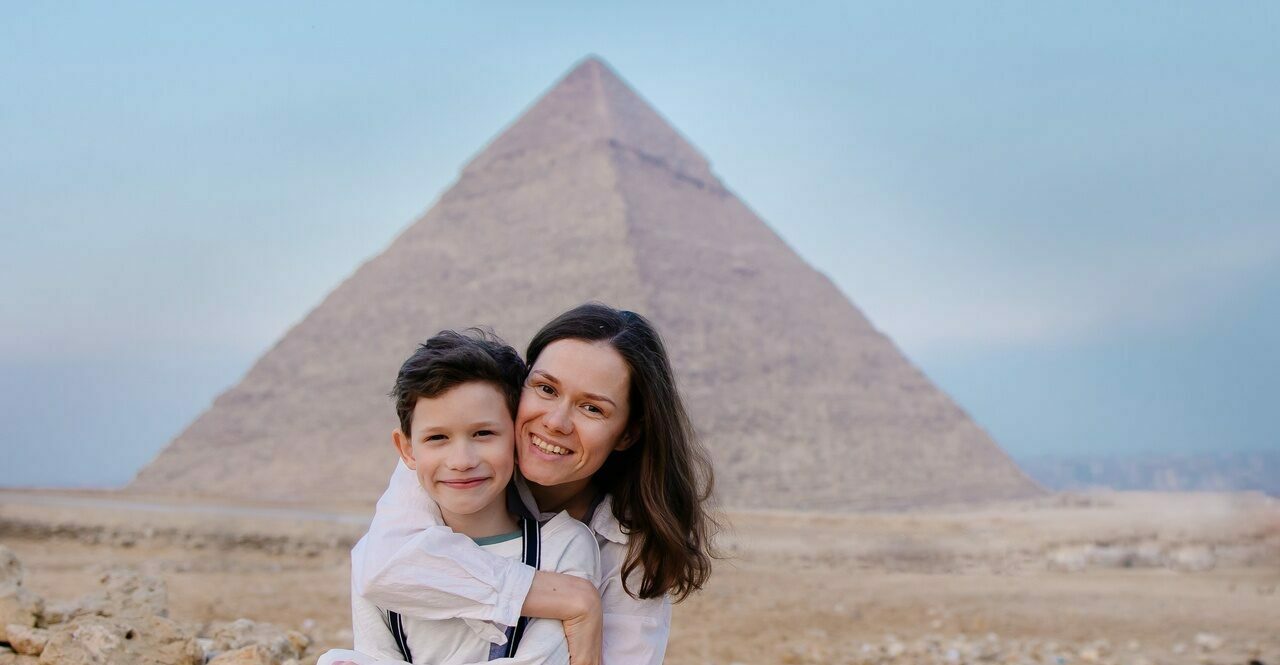
Egypt: a family journey to the best of History
A Journey Through the Unparalleled Grandeur of the Extinct Great Civilization
By Ronny Hein
There are many experiences that change your perspectives and life itself. None as enriching as visiting Egypt, which some simply define as “the journey to the best of History.”
History and grandeur. The sights you will behold in Cairo, Luxor, and the surrounding areas will be anything but small and insignificant. You and your family will spend awe-struck days after visiting Giza (which is almost a district of Cairo, the largest megalopolis in all of Africa), where the pyramids of Khufu, Khafre, and Menkaure stand.
These colossal tombs are unbelievable: yes, pyramids are tombs ordered to be built by pharaohs in the past. Just to give you an idea, the Great Pyramid required the labor of one hundred thousand slaves for twenty years. Two million blocks were stacked (the lightest of them weighing two tons!), following sophisticated astronomical principles.

The ideal trip for you to take with your family in the land of the pharaohs, Egypt, includes Cairo, Luxor, and a necessary cruise between Luxor (ancient Thebes, the former capital of Egypt) and the Aswan Dam. Hiring a guide is ESSENTIAL. They will turn everything into stories and culture. But choose wisely: ordinary guides overlook history; they either don’t see it or don’t share it. You might walk past the spot where the Rosetta Stone was discovered, the monolith that unraveled the meaning of hieroglyphs and now resides in the British Museum in London – and simply not hear about it. To minimize this issue, it’s important for everyone to read and discuss about Egypt before the journey.
Cairo, your point of arrival, is a chaotic and beautiful city in its mix of temples, fortresses, and museums on display. Cars honk incessantly and don’t hesitate to bump into each other, in a very non-Western manner. The city is also occupied by tens of thousands of vendors trying to sell everything – the fakest of the fake, and rarely, something of “real” but low quality (scrolls, sculptures produced in China, and other useless items). The only way to avoid them is to never lock eyes with any of them.
And if none of this bothers you, it’s going to be more fun. Some attractions you can’t miss include visiting the Citadel of Saladin, which also houses the Alabaster Mosque and 84-meter-tall minarets – the sensation of being in the Middle Ages in the 21st century. Also, the Khan el Khalili, a vibrant and abundant Egyptian bazaar, where almost everything is worth 5% of its initial price, and you’re pleased if, through bargaining, you manage to get a 50% discount.
Photos 1, 2, and 3: Alabaster Mosque / Photo 4: Khan el Khalili Bazaar
The tour of the pyramids can take up as much time as you want. The Sphinx and the pyramids form an almost perfect harmony. There are evening shows with stories and the illuminated monuments. You will definitely end up on the hump of a dromedary (no, they are not camels, which do indeed have two humps), taking the customary photos.
It is absolutely mandatory to take a guided tour of the Egyptian Museum, now revitalized, with the most beautiful sarcophagi (including Tutankhamun’s), mummies, tools, hieroglyphic walls, and instruments that this civilization used to flourish. Be sure not to miss the opportunity to go back three thousand years in just a few hours, by taking a trip to the stepped pyramid of Saqqara (in fact, the oldest of them all, built by Pharaoh Djoser in 2630 BC) and a few kilometers further ahead. Also, don’t miss the exhibition of the statue of Ramses in a pavilion where you can see gigantic parts of the sculpture (found under the sand, divided into six pieces).
Photo 1: Sphinx and Pyramids / Photo 2: Camel Ride / Photo 3: Egyptian Museum / Photo 4: Statue of Ramses
Your next stop is Luxor, just an hour’s flight from Cairo. You can already book your ticket from where you are that includes both cities.
Get ready to witness the cream of the crop. It might sound almost heretical to say, but the truth is, when it comes to historical value, compared to the temples of Karnak or Luxor, the pyramids are just… let’s put it this way… photogenic.
In fact, the remnants of the Egyptian civilization’s zenith are here. In Luxor (formerly known as Thebes), which was the political and spiritual capital of ancient Egypt for a glorious five centuries starting from the 18th dynasty (out of a total of 32 that divide the history of this civilization). It was the reign of figures like Thutmose I (the pharaoh who replaced pyramids with tombs carved into the Valley of the Kings), Hatshepsut (the only woman to have ruled Egypt, and she did it as if she were a man), and Ramses II, the greatest of all pharaohs, among others. Here, the country reached epic dimensions and its highest level of advancement. By far, its main attraction is the Temple of Karnak and the famous columns you might have seen in the first Indiana Jones movie.
To put it succinctly, it’s a temple dedicated to the god Amun. Its immense area is equivalent to that of thirteen of the largest European cathedrals combined. Almost a city of worship, the temple was built over 13 centuries and is an endless showcase of unimaginable works, among which stand out the 134 columns that are 23 meters tall, upon which rested the world’s largest roof one day.
There’s also the 43-meter pillar (14 stories!) of the monumental entrance and the unbelievable obelisk of Hatshepsut, a single piece weighing 340 tons made of pink granite, which—God knows how—was brought from a quarry in Aswan (120 kilometers away) and, even more inexplicably, was erected.
Karnak is a two-hour program for casual tourists and a lifelong journey for passionate Egyptologists. Yet, there are those who consider the Luxor Temple—just a few kilometers away—more consistent, as it was entirely constructed by Amenhotep III and Ramses II, in two consecutive dynasties.
Jokers often call the Luxor Temple “toothless” because one of its monumental entrance obelisks was inexplicably gifted to the French, compromising the symmetry of the ensemble (it’s located in the Place de la Concorde in Paris).
Photos 1 and 2: Karnak Temple / Photos 3 and 4: Luxor Temple
On the western bank of the Nile River, you’ll find the Valley of the Kings, a collection of 63 tombs, some of which contain over 120 chambers. Beautiful, colorful, and well-preserved (due to being underground), this is the place where you run the risk of being enchanted and spending the rest of your life studying that civilization. Please, go with a guide – for the love of God!
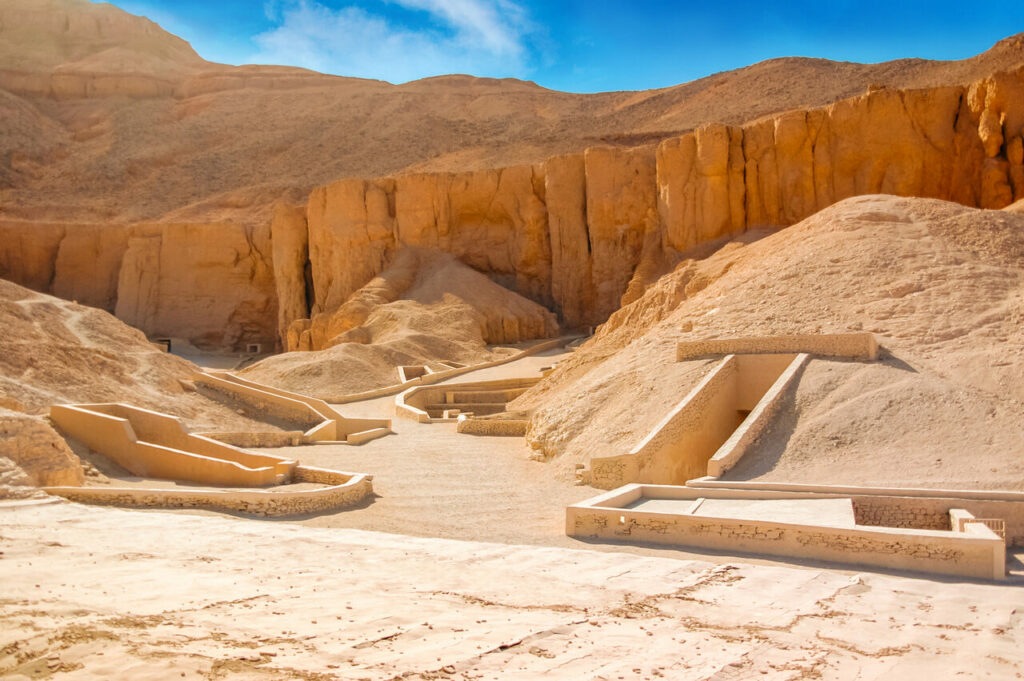
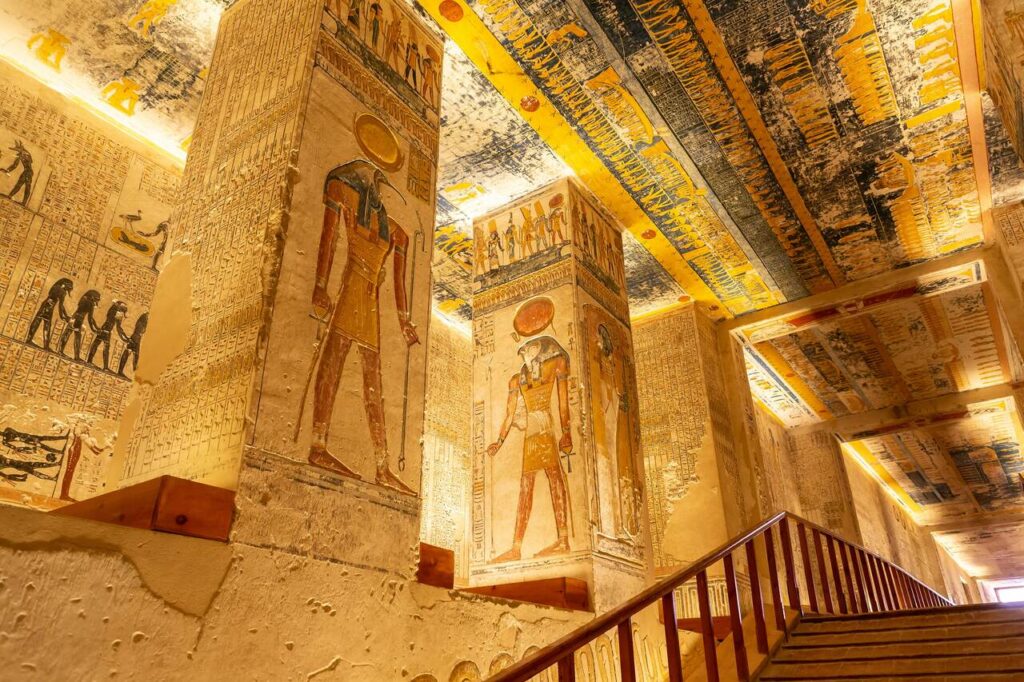
Luxor is also the starting point of the magical journey along the Nile, undertaken daily by various ships, in the most popular river cruises on record – journeys that can last up to five days. During this voyage, already under the anesthetic effect of previous emotions, travelers will also explore the Horus Temple in Edfu and the Kom Ombo Temple, built in honor of Harris. They will also witness the timeless essence of Arab villages frozen in centuries, as if taken from an ancient tale of One Thousand and One Nights. From the deck, you will grasp how the riverbanks define the living space of that country. Just a few meters of lush greenery on both sides, and there it is: the rest is sand and desert.
The journey culminates in Aswan, the southernmost of Egypt’s great cities, inhabited by the Nubians, the black descendants of a people often enslaved by the pharaohs to exalt their glory. Feluccas (primitive yet efficient sailboats) navigate this stretch of the Nile, carrying travelers into biblical (or Quranic, as it is a Muslim country) sensations.
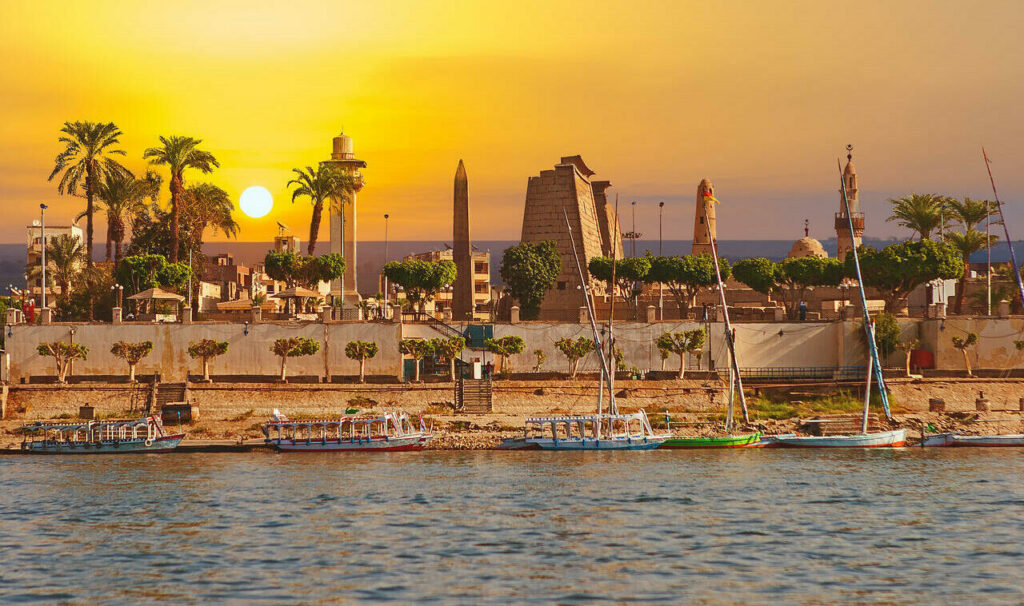

You can’t go further south by boat. The monumental Aswan Dam — a 115-meter-high wall by 3600 meters wide, built between 1960 and 1971 — is an insurmountable obstacle. There, dammed up, the Nile forms an immense lake that floods 350 kilometers of Egyptian territory and 150 kilometers of neighboring Sudan.
The Aswan Dam is considered Egypt’s last pharaonic feat and was constructed by a more populist and militarized leader than his distant predecessors (not ancestors), named Gamal Abdel Nasser.
Aside from generating energy for the country, its waters increased the cultivable area of the country by 2 million square kilometers. While on one hand, it reduced Egypt’s poverty, on the other hand, it buried an incalculable amount of archaeological treasures. In an international effort, $43 million were invested at the time to save the magnificent temples erected by Ramses II in Abu Simbel, which were transported, piece by piece, to a plateau above the flooded area.
The rescued grand ruin (which can also be visited) has become a symbol of resistance against the deleterious actions of time and humanity.
Which, by the way, is the main legacy left by this civilization, which, thousands of years after its extinction, will always be the journey to the best of History.
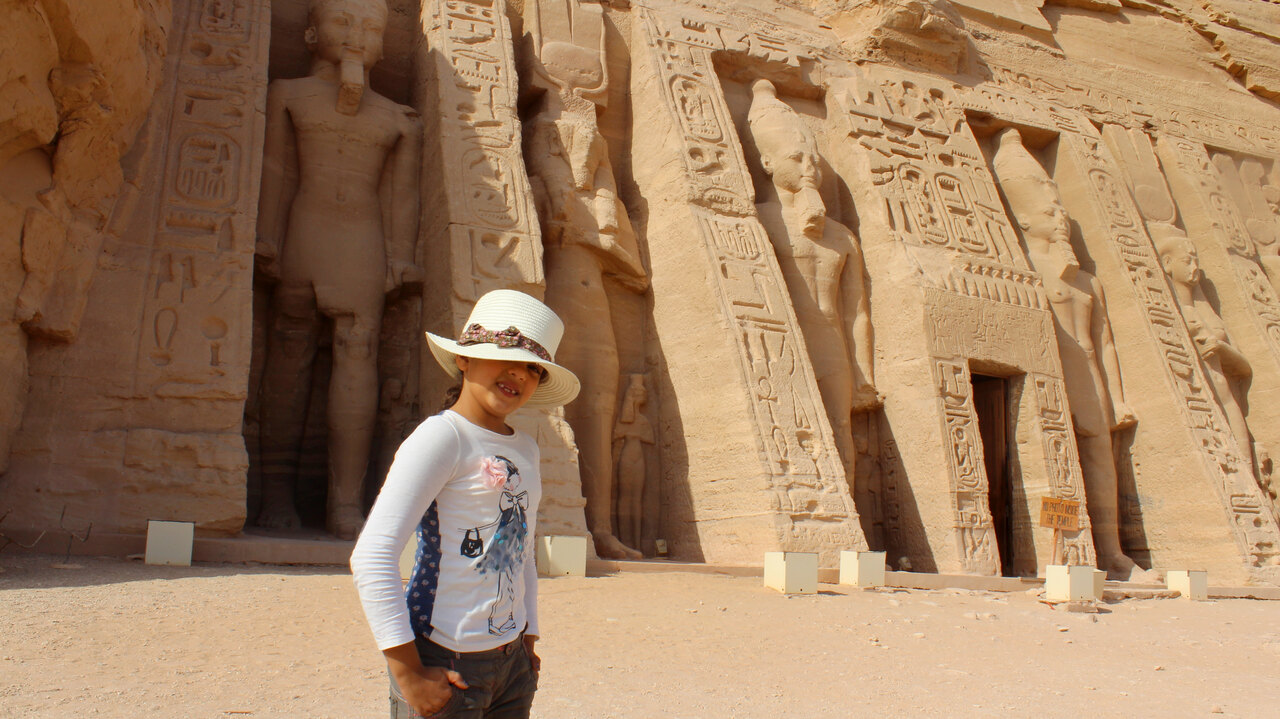
Services
How to Get There?
Good news: starting from September, EgyptAir will have direct weekly flights between São Paulo and Cairo. The flight duration will be less than 13 hours.
Visa requirements for Brazilians: see here.
Tips from our Community – Where to Stay:
CAIRO
Mariott Mean House (with a view of the Pyramids)!
Kempinski Nile Hotel, with a rooftop pool and incredible city view
LUXOR
Hilton Luxor Resort & SPA
The agencies “Viajar com Crianças” (Traveling with Kids) and “Viajar com Adolescentes” (Traveling with Adolescents) are well acquainted with the destination and can organize this trip for your family.

















